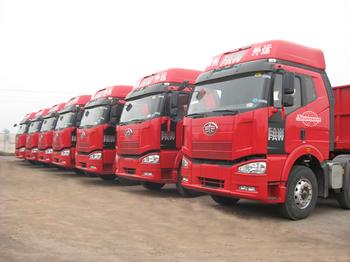Chengdu to Inner Mongolia logistics green logistics industry as an important part of modern service industry, involving wide areas absorb more employment, boost production, stimulating large consumer role in promoting industrial restructuring, transformation of economic development and enhance the competitiveness of the national economy has played an important role. In the long term, the development of modern logistics is changing the economic development of the fundamental requirements. Not only help to improve the efficiency of social resources turnover, reduce inventory costs, capital costs, and the use of social funds put pressure, but also help to promote the production from inefficient to efficient extensive "just in time", "fine" change, promote consumption patterns of the original pure pursuit of subsistence or quantitative, to pursue diversification of consumption value, personalized transition upgrade from. Modern logistics is the main artery of the national economy, will lead to the production efficiency, distribution efficiency and increase consumption efficiency of linkage (Chengdu to Inner logistics line). In recent years, China's logistics industry is facing a rare opportunity. Under the impetus of a series of policy measures to achieve new progress in China's logistics industry, logistics, professional and social restructuring process significantly faster. However, we should see the current logistics industry is also facing many challenges. As a low degree of specialization, integrated operation and slow progress, impact and leading role in economic development is not fully realized. Currently, the challenge facing China's logistics industry is mainly reflected in the following four mismatch: First logistics infrastructure and development of modern logistics mismatch. Infrastructure can not meet the development needs of the logistics industry. For example, the high costs of highway use, not only increases the social logistics costs, but also lead to overloading violations, such phenomena have occurred detour, reducing logistics efficiency. Again, peri-urban warehouses, supply shortage, resulting in rents rising, increased logistics costs, warehousing costs of the total logistics costs to reach about 35%; Again, imperfect information systems, public information platform construction lag, lack of information sharing mechanism lead logistics vehicles Kongshi rate, non-optimal allocation of resources, logistics and widespread. Convergence between poor infrastructure. On the one hand, the slow development of multimodal transport. Because of the fragmentation of the system has not fundamentally broken, railway, highway, maritime, aviation and other departments are independent, high inter-ministerial coordination costs, slow development of multimodal transport. Data shows that the proportion of international sea and railway transport is usually around 20%, US 40%, India 25%, while China is only 2%. On the other hand, the convergence of logistics parks and logistics infrastructure between the lack of logistics integration is not conducive to the operation of the logistics park is not conducive to play gathering capabilities and logistics organizational functions (Chengdu to Inner logistics line). Second, social management and logistics development do not match. Uncoordinated development of urban management and logistics. "Logistics siege" phenomenon and the "last mile" issues outstanding. In urban planning, logistics operations specifications and standardization construction is lagging behind, leading to poor logistics. Between urban logistics planning and logistics infrastructure outside does not converge, the city's needs in a number of wholesale transit cargo, logistics chain is lengthened artificially. In urban logistics management, usually taken after the dogged approach. Research found that delivery vehicles are closely related to people's livelihood can not legally pass into the city, parking and loading and unloading operations, always face the risk of non-compliance fines, numerous fines increased logistics costs have become a major driving force. Third, tax collection and logistics development mode mismatch. Business tax system and the integration of modern logistics operation mode suited. Modern logistics emphasize transportation, distribution, warehousing, distribution processing and other aspects of the integration of operations, the need to pay taxes on a unified objective, but the current business tax policy, transport links execution rate of 3% tax in accordance with the standard transportation, warehousing, and other links execution rate of 5% in accordance with the service standards. Each link separately independent accounting, perform different deductible policy, and subcontractors must first open a ticket, once satisfied that tax, integrated operation of the logistics industry is hindered. Business tax non-deductible VAT issue has emerged, leading logistics actual tax increase. (Chengdu to Inner logistics line)
 | No.12985141
| No.12985141
